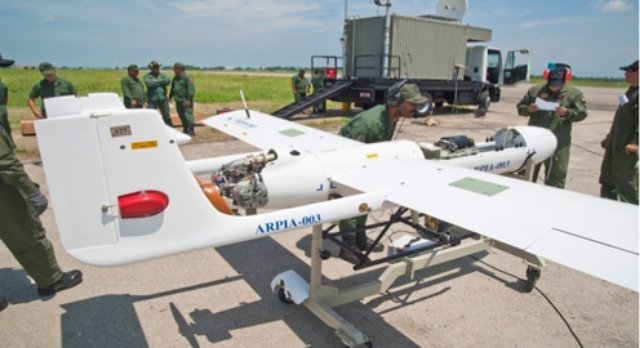 Venezuela has launched a UAS produced with Iran’s technical assistance in an effort to step up the fight against drug trafficking in the Latin American country.
Venezuela has launched a UAS produced with Iran’s technical assistance in an effort to step up the fight against drug trafficking in the Latin American country.
Venezuelan President Nicolas Maduro made the announcement during a ceremony, stating that the UAS will be used to monitor Venezuela’s borders.
Late Venezuelan President Hugo Chavez said in January 2012 that his country had manufactured its first unmanned aircraft system (UAS), dubbed Arpia-001 (Harpy-001), in cooperation with Iranian experts.
The UAS has a 100-kilometer (60-mile) sweep and can fly solo for some 90 minutes and reach an altitude of 3,000 meters (9,000 feet), press tv reported.
Early in May, Iran displayed its most advanced Unmanned Aircraft System (UAS) designed and manufactured by the country’s engineers.
The stealth UAS, named Hemaseh (Epic), was unveiled in a special ceremony in the presence of Defence Minister Brigadier General Ahmad Vahidi.
The ceremony was held on the sidelines of a conference to commemorate the defence ministry’s martyrs.
Speaking to reporters on the sidelines of the ceremony, Vahidi stated that the UAS has been built by defence industry experts and is capable of conducting surveillance and reconnaissance missions as well as combat missions simultaneously.
Earlier, Deputy Defense Minister for Industrial and Research Affairs Mohammad Eslami had told reporters that Hemaseh enjoys higher capabilities compared with other Iran-made UAS and can fly at higher altitudes and enjoys longer flight endurance.
Iran has recently made giant advancements in aerospace industries, specially in designing and manufacturing pilotless drones.
In April, the Iranian Air DefenSe Force displayed its Sarir (Throne) UAS on the occasion of the National Army Day.
Speaking to reporters at the time, Commander of Khatam ol-Anbia Air Defence Base Brigadier General Farzad Esmayeeli stated that Sarir is a long-range, long-endurance radar evading air defence UAS.
“Sarir is capable of carrying cameras and air-to-air missiles and tens of this UAS have so far been produced and used,” he added.
Source: FARS
